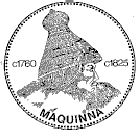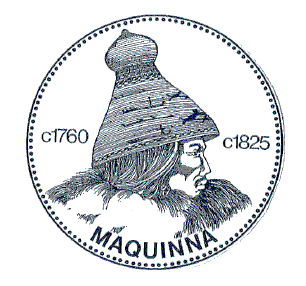Code of Conduct
Code of Conduct - Updated June 2024
 CHIEF MAQUINNA ELEMENTARY SCHOOL
CHIEF MAQUINNA ELEMENTARY SCHOOL
2684 East 2nd Street, Vancouver BC V5M 1C9 Phone ~ 604-713-4705 ~ maquinna@vsb.bc.ca
CHIEF MAQUINNA STUDENT CODE OF CONDUCT
Reviewed June 2023
School Mission Statement
A school with more than a half century tradition of service, Chief Maquinna is committed to enabling students to reach intellectually, aesthetically, athletically, and socially within a school community that fosters respect, empathy, achievement, cooperation, and helpfulness. We embrace the Seven Sacred Teachings of Canada’s Indigenous Peoples and attempt to integrate them in all that we say and do at Maquinna.
What does the Code of Conduct look like at Maquinna? (Statement of Purpose and Acceptable Conduct)
Respect Yourself- means that we are demonstrating being responsible for ourselves and our actions. Treat ourselves with pride and acceptance. We show this through respect, truth, humility, and honesty. We use our wisdom to understand what we need.
Respect Others- means we take into consideration other people’s feelings. We treat others just how we’d like to be treated. We treat others with respect. We show this through respect, courage, and love. We use our wisdom to understand what others need.
Respect this Place- means we take pride in our school. We treat our physical belongings like we’d treat our home. Our school is a reflection on us and how we feel about ourselves. We show this through respect for our world and our environment. We use our wisdom about nature to treat the Earth respectfully and make it better for generations that follow us.
The Code of Conduct promotes clear behavioural expectations of respectful and responsible citizenship that lead to a culture of safety, caring and respect amongst everyone in the school and programs and at all school-events and activities.
The school code of conduct applies at school, during school-organized or sponsored activities, on school buses, and any behaviour even if outside of school or school hours (including on-line behaviour), that negatively impacts the safe, caring, or orderly environment of the school, and/or student learning.
Some examples of expected (acceptable) behaviour in and around the school:
In the hallways:
- walk, don’t run on the right-hand side of the hallway, use inside voices-no shouting, give others space
In class:
- Listen to the teacher, allow other students to work, try your best, keep your belongings tidy
In the lunchroom:
- eat quietly using good manners, clean up after yourself: recycle juice boxes: throw garbage in can
On the playground at recess and lunch:
- Include others in games, play safely, stay within in school boundaries
Before and after school
- Play safely and fairly, do not ride bikes, scooters or skateboards on the playground or school grounds, follow the school crossing guards instructions
- Safely come directly to the school in the morning, go straight home afterschool if you are expected.
These are just a few examples and not an all-inclusive list. A progression of expectations will increase as students
become older, more mature, and move through successive grades
Sometimes students need help to solve problems at school. These are some people who can help you are: supervision aides, teachers/ student support workers, the principal, the office administrator, the counselor, the school engineer, CST Staff.
Parents, family members and guardians can help by:
Talking to your child about the school code of conduct and why their behaviour matters, discussing problems and issues that arise, teaching students about solving problems peacefully, encouraging your child to take responsibility for his or her belongings, work and behaviour and supporting your child with his or her schoolwork.
Unacceptable Behaviour
At Maquinna and in our school community, all forms of discrimination will not be tolerated:
- Racism and discrimination will not be tolerated in our school
- Homophobia will not be tolerated in our school
- Sexism will not be tolerated in our school
Some other examples of behaviour that are not acceptable at the school:
- Disrupting the learning of others
- Using bad language.
- Hurting others’ feelings by words or actions
- Pushing, playing roughly, playing unsafely, play fighting.
- Littering
- Bringing toy weapons to school.
Some examples of very serious breaches of the Code of Conduct:
- Violent behaviour such as hitting with intent to hurt, fighting and threatening others.
- Theft or vandalism to school or others’ property.
- Bringing a weapon to school.
- Any form of bullying (cyber or otherwise), threats, harassment, intimidation or physical violence.
- Illegal acts, such as possession, use or distribution of illegal or restricted substances.
- Behaviours that interfere with the learning of others, interfere with an orderly environment, or create an unsafe environment.
Consequences: vary according to the frequency and severity of the action. We consider the ability of the child to understand their behaviour and expect that as children mature, they can take more responsibility for their actions and self-discipline, as well as increasing consequences for inappropriate conduct/unacceptable behaviour. Special considerations may apply to students with special needs if they are unable to comply with parts of the Code ofConduct due to having a disability of an intellectual, physical, sensory, emotional, or behavioral nature. Our goal is to have students take responsibility for their actions, to commit to changing their behaviour and to apologize to the person who has been hurt.
- Students will discuss the issue with the Principal.
- Student may complete a problem-solving sheet either in class or in the office. This will be signed by the teacher, parent, student, and Principal.
- Our goal is to be restorative, rather than punitive, to ensure that the student understands the behaviour and makes a plan, for how to improve it going forward.
- responses to unacceptable conduct are consistent and fair
- Student may lose playtime at recess or lunch or work in another classroom for a time.
- Students will have a logical consequence such as garbage duty for littering, writing a letter of apology for hurting someone’s feelings or loss of experiences if student is deemed unsafe while accompanying class outside of the school setting i.e., loss of field studies for not listening to the teacher.
- A meeting may be set up with the parent, teacher, student, and administration to set up a plan to improve behaviour.
- Repetitive or severe unacceptable behaviour may result in increased severity of subsequence disciplinary action. The age and maturity of students are considered when determining appropriate consequences.
- For serious issues, student may receive an in-school suspension, or a formal suspension. A plan will be put in place with expectations for improvement when the student returns to school.
- When a student is suspended, parents will be contacted by phone or in person in cases of serious misbehaviour. School Board officials will also be notified, as well as other authorities, if necessary
- All reasonable steps will be taken to prevent retaliation against a student who has made a complaint of a breach of a code of conduct.
Chief Maquinna school promotes the values expressed in the BC Human Rights Code respecting the rights of all individuals in accordance with the law – Students shall not discriminate against others on the basis of the race, religion, colour, ancestry, place of origin, marital status, family status, age, sex or sexual orientation, gender identity/expressions, or physical or mental disability, or for any other reasons set out in the Hunan Rights Code of British Columbia, nor shall a student publish or display anything that would indicate an intention to discriminate against another, or expose them to contempt or ridicule, on the basis of any such grounds.
The school will treat seriously behaviour or communication that discriminates based on race, colour, ancestry, place of origin, religion, marital status, family status, physical or mental disability, sex or sexual orientation (prohibited grounds set out in the BC Human Rights Code).
The school code of conduct applies at school, during school organized or sponsored activities, on school buses, and any behaviour even if outside of school or school hours, (including on-line behaviour), that negatively impacts the safe, caring, or orderly environment of the school, and/or student learning,
Notifications
The principal or designate has a responsibility to inform other parties of serious breached of the code of conduct. These parties may include staff, parent(s) of student offender(s), parent(s) of student victim(s), school district officials, police and/or other agencies, as required by law and/or all parents.
In accordance with the School Act, Sec. 85 (2) (ii) and (d), The Board authorizes the Principal or designate of any school in the district to suspend a student from attendance at school for up to five days.
Suspensions may be for the following reasons:
a. Because a student is willfully and repeatedly disrespectful to a teacher or to any other employee of the Board carrying out responsibilities approved by the Board.
b. Because the behaviour of the student breaches the District Code of Conduct or policy and/or has a harmful effect on others or the learning environment of the school.
c. Because the student has failed to comply with the School Code of Conduct.
Suspensions over five days are made in consultation with the appropriate Director of Instruction as per District Policy http://www.vsb.bc.ca/district-policy/jgd-r-district-student-code-conduct-regulation. As per AP 350 7.7 an educational program must be provided.
All reasonable steps will be taken to prevent retaliation against a student who has made a complaint of a breach of a code of conduct.
Other processes:
Students, parents/guardians/caregivers, and staff are consulted as part of the annual review of the code of conduct.
The code of conduct is brought to the attention and made available to all staff, parents/guardians/caregivers, and students at beginning of new school year and to newly assigned staff and students registering mid-year.
Processes are in place to make expectations regarding acceptable conduct known to everyone who enters the school, and to the public.
Protocols have been established to guide the conduct of students, parents, coaches and involved members of the greater community while acting as ambassadors of the school.
Strategies have been developed for the active teaching and promotion of behavioural expectations outlined in codes of conduct. Behavioural expectations outlined in codes of conduct are consistently taught and actively promoted.
Responses to unacceptable behaviour must be based consistently on sound principles and be appropriate to the context.
Processes are in place to monitor conduct to ensure codes reflect current and emerging situations and contribute to school safety.
The code of conduct is referenced by administrators in any disciplinary meeting involving a student (and parents/guardians/caregivers).
The code of conduct is displayed in a prominent area in the school and on the school website.

